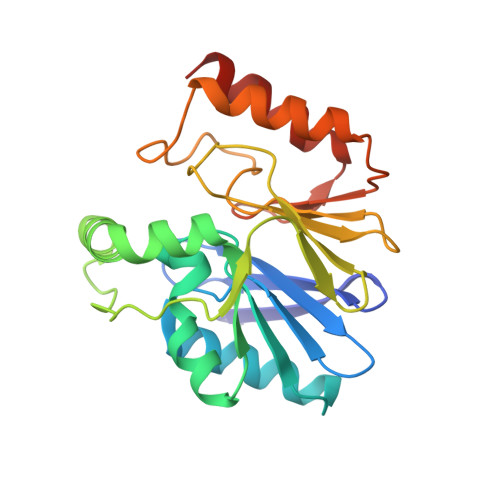Structural basis for the broad-spectrum inhibition of metallo-beta-lactamases by thiols.
Lienard, B.M., Garau, G., Horsfall, L., Karsisiotis, A.I., Damblon, C., Lassaux, P., Papamicael, C., Roberts, G.C., Galleni, M., Dideberg, O., Frere, J.M., Schofield, C.J.(2008) Org Biomol Chem 6: 2282-2294
- PubMed: 18563261
- DOI: https://doi.org/10.1039/b802311e
- Primary Citation of Related Structures:
2QDS, 2QDT - PubMed Abstract:
The development of broad-spectrum metallo-beta-lactamase (MBL) inhibitors is challenging due to structural diversity and differences in metal utilisation by these enzymes. Analysis of structural data, followed by non-denturing mass spectrometric analyses, identified thiols proposed to inhibit representative MBLs from all three sub-classes: B1, B2 and B3. Solution analyses led to the identification of broad spectrum inhibitors, including potent inhibitors of the CphA MBL (Aeromonas hydrophila). Structural studies revealed that, as observed for other B1 and B3 MBLs, inhibition of the L1 MBL thiols involves metal chelation. Evidence is reported that this is not the case for inhibition of the CphA enzyme by some thiols; the crystal structure of the CphA-Zn-inhibitor complex reveals a binding mode in which the thiol does not interact with the zinc. The structural data enabled the design and the production of further more potent inhibitors. Overall the results suggest that the development of reasonably broad-spectrum MBL inhibitors should be possible.
- Chemistry Research Laboratory and OCISB, University of Oxford, 12 Mansfield Road, Oxford, OX1 3TA, UK.
Organizational Affiliation:




















